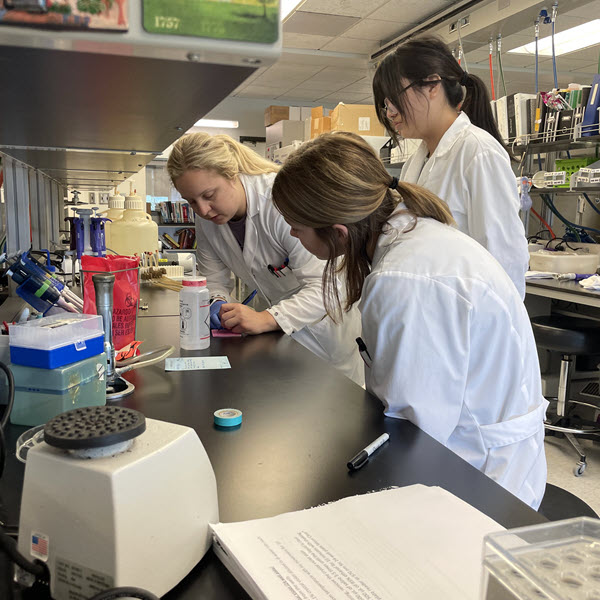In this stream, research focuses on microbial biofilms, which are living, microbial communities that develop and persist at interfaces in aqueous environments. Biofilms are composed of cells immobilized at a surface or interface that is embedded in an organic polymer matrix of microbial origin. Biofilm cells differ from their planktonic, free-swimming counterparts in the genes and proteins they express, resulting in distinct phenotypes that include altered resistance to antimicrobial agents, antibiotics, and host immune systems. Biofilms occur naturally in open environments, such as in Yellowstone National Park’s hot springs, and in closed environments. In fact, 99% of all microbial activity in the open environment is in multi-species biofilms. Biofilms can be beneficial, including use in waste-water and toxic sites, where bacteria are selected for ability to utilize or detoxify contaminants and then introduced to contaminated sites. Biofilms also occur in closed systems. For example, biofilms can occur as contaminants in industrial systems and as pathogens in organisms.
The stream works hand in hand with the core faculty members of the Binghamton Biofilm Research Center (BBRC) to investigate the basic biology of microbial biofilms in ways that inform a better understanding of how to address the problems that these biofilms can create and how to use biofilms to solve problems. Thus, FRI students can easily comprehend the relevance of basic research on biofilms and visualize the importance of collaboration in tackling real world problems.
Microbial Biofilms in Human Health is cross-disciplinary in nature
Microbial Biofilms in Human Health
The Microbial Biofilms in Human Health research stream utilizes a strong interdisciplinary and collaborative approach to microbial biofilms research. In addition to the foundational background of microbiology, students learn basic skills and techniques in cell and molecular biology, biochemistry, and microbial ecology. Successful research in microbial biofilms requires collaborations with faculty both inside and outside of the biofilm-research group to bring together the specific expertise required to tackle each unique research question.
Microbial Biofilms Research Educator

Dr. Whitni Redman is the Research Educator for Microbial Biofilms in Human Health research stream. Her research focuses on improving drug delivery and developing novel conjunctive therapies for bacterial infections in a variety of diseases. She is also researching how the bacteria behave and interact with our immune systems after treatment. Additionally, she plans to conduct clinical pilot studies to investigate the role of contraceptives in reoccurring gynecological infections. Dr. Redman has been involved in the FRI program for two years as a research mentor for a variety of projects. Outside of FRI, she has mentored several students of which many are now enrolled in various graduate programs including medical school. Dr. Redman enjoys mentoring and investing in the success of her students. Her lab encourages a positive and collaborative research environment.